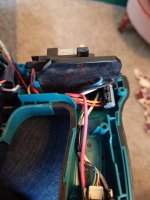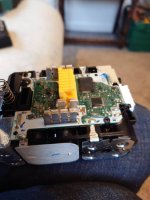aricooperdavis
Moderator
Does anyone have any top tips for drying a drill and battery (it's a Makita DHR171)?
My drill and I went for an impromptu swim whilst bolting a travsere line above a flooded shaft yesterday. I scrambled out fairly quickly, but it was fully submerged for about 10 seconds, and was pretty wet through. I whipped the battery out ASAP but otherwise haven't done anything to it.
My plan is to disassemble as much as I can and leave it in the airing cupboard for a few weeks. Anything else I should do?
My drill and I went for an impromptu swim whilst bolting a travsere line above a flooded shaft yesterday. I scrambled out fairly quickly, but it was fully submerged for about 10 seconds, and was pretty wet through. I whipped the battery out ASAP but otherwise haven't done anything to it.
My plan is to disassemble as much as I can and leave it in the airing cupboard for a few weeks. Anything else I should do?
Last edited:




